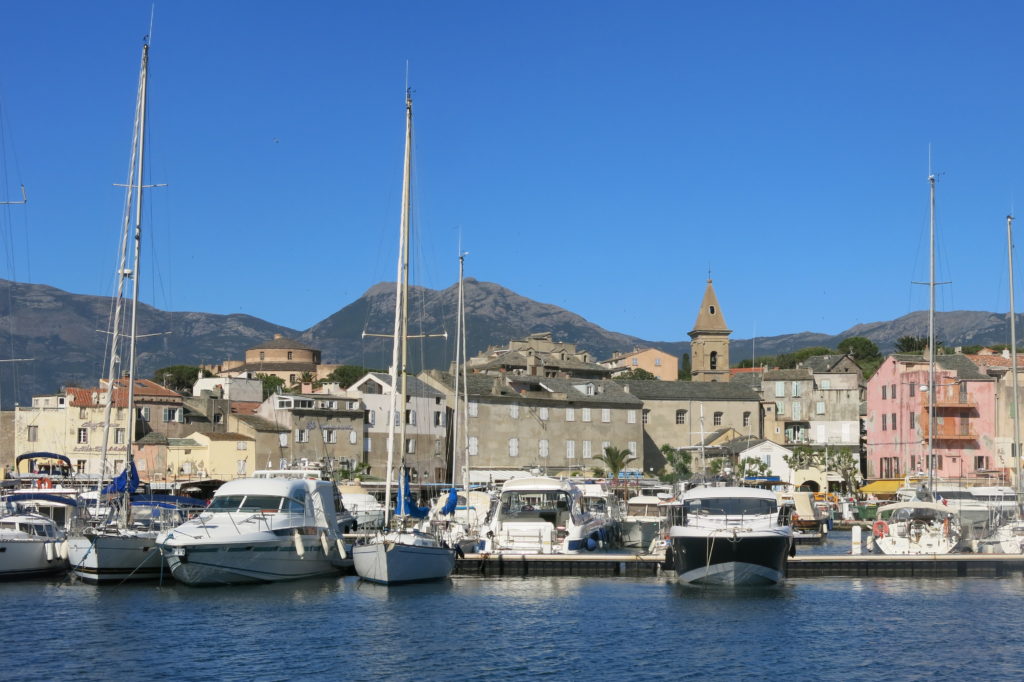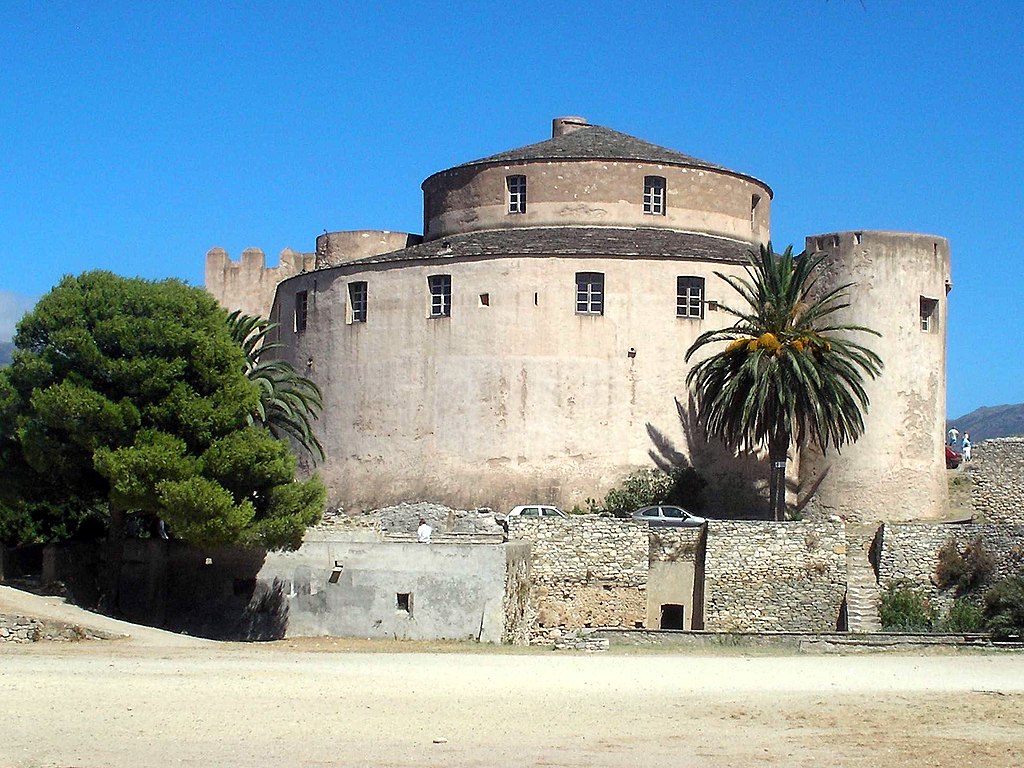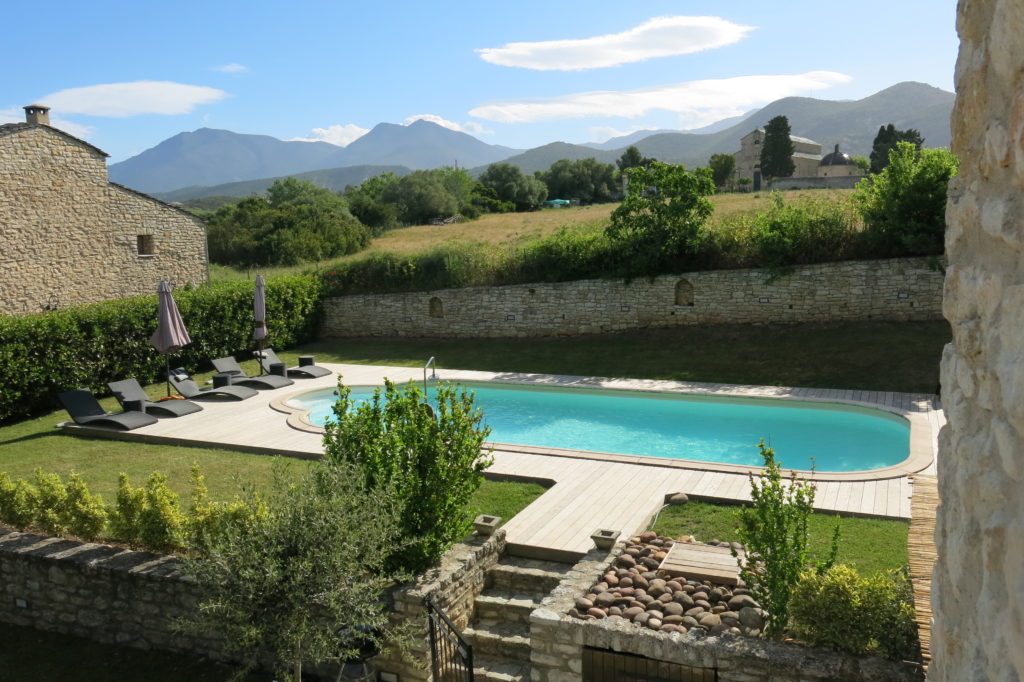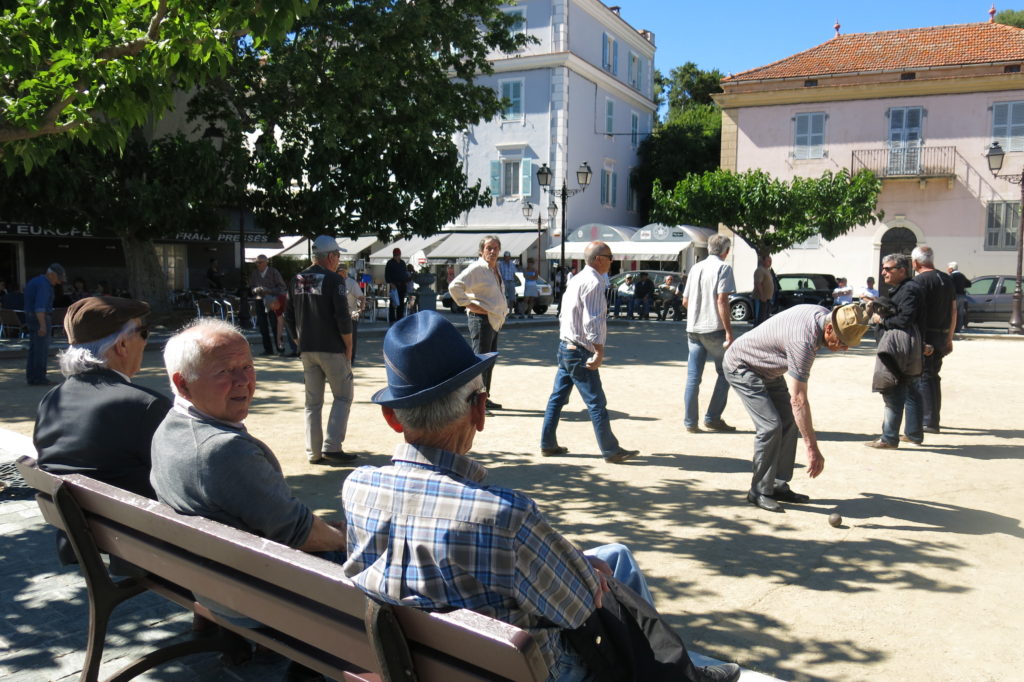A once much-coveted Mediterranean island is now a byword for tranquility. MAL ROGERS reports
At the siege of Calvi on the north west coast of Corsica in 1794, the home side fought with customary ferocity against the British — sabre, machete, dagger and canon were used with deadly intent. “Hey, you’ll have somebody’s eye out like that!” the British could be heard shouting at the Corsicans, and so they did. In this instance it was Admiral Nelson’s. A plaque in the lofty citadel marks the spot from where the bullet which half-blinded Horatio was fired.
The town of Calvi is perfect for a siege — hemmed in by the Mediterranean on one side, and the mountains of Cap Corse on the other. Perfect, also, for sitting with glass of local rosé gris in hand, and watching the magnificent drama of the setting sun illuminate the snowcapped peaks across the bay.
 The view to the mountains from Saint-Florent
The view to the mountains from Saint-FlorentCorsica is the most mountainous island in the Mediterranean, with several heroic peaks higher than 6,500ft, (that’s more than two Carrauntoohils on top of each other). The terrain provides driving conditions best described as uncompromising. My destination, just on the other side of that jagged range you can spot from Calvi, was the town of Saint-Florent.
Steep, narrow, winding roads offered nonstop white-knuckle thrills, to say nothing of vertiginous views taking gorges, waterfalls, extraordinary rock formations, forests and mediaeval villages. And vineyards clinging to the seemingly vertical sides of the valley. How on earth do they harvest the grapes?
In between is the maquis, the Mediterranean wilderness made up of botanical A-listers such as arbutus, box, cork oak, myrtle, rosemary, sweet chestnut and thyme. The scent on the breeze is intoxicating.
On roads shared with wild boar, goats and sheep — and patrolled overhead by kites and buzzards — you pass the likes of Sant’Antonino, the oldest inhabited village in Corsica. Turn left at the herd of brown and white goats and you can’t miss it.
This is reputedly one of the most beautiful villages in all France. Probably no. 2 or 3 by the looks of it. It still manages to cling to the top of a substantial mountain even after twelve hundred years of very iffy history. Through a warren of narrow lanes, up steep pathways and underneath vaulted passages, I eventually reached the top. An A-Z of the whole of north Corsica spread out below.
Of course taking refuge in the fastness of the mountains is part of the necessary culture here. All the usual suspects have come calling: Phoenicians, Byzantines, Greeks, Carthaginians, Romans, Saracens, British, Pisans and Genoese.
The Genoese finally sold the island to France in 1768. During the Second World War US troops arrived. One of the pilots, chap by the name of Joseph Heller, would often see a dilemma in the operations of the Air Force with mutually conflicting yet dependent conditions. A few more glasses of the local rosé and who knows, somebody could write a book about it.
 The Citadel in Saint-Florent (image by Gzen92, Wikimedia))
The Citadel in Saint-Florent (image by Gzen92, Wikimedia))Corsica is also the birthplace of Napoleon — unlike Columbus, no doubt about this one. The sweet-smelling maquis, the Little Corporal said, was one he would smell the whole time he was in exile. Napoleon, Nelson, Christopher Columbus, Catch-22 — if you don’t know much about history, but you know what you like, Corsica’s the place.
Almost through the mountains now, and the reappearance of the waters of the Mediterranean meant that the town I could spy, just across the bay, was Saint-Florent, where my digs lay.
This lovely fishing village is a bit French, a bit Italian a lot Corsican. There’s a huge harbour, a bakery, a butcher’s, a citadel (quel surpris), and, even less surpris, a wrap-around, dazzling beach.
You won’t go short of restaurants in Saint-Florent; you’ll get fish, wild boar stew, and twinkly views across the harbour.
 A favourite restaurant
A favourite restaurantYOU’VE probably guessed that one of the main cafes in Saint-Florent is called Café Napoléon. But my favourite is one called La Table di a Loghja.
A local lady who was enjoying a late breakfast there told me a joke. She’d seen me scribbling notes in a jotter and asked me what that was all about. She said I’d be interested to know that there had been an incident in the town, “Why, only last week.”
“Was it serious?”
“Mais oui. An elderly gentleman had suffered a heart attack. Un crises caridaquue,” she said. “I shouted to the crowd if there was a doctor about. A gentleman, just playing petanque, came over. I said, ‘You are a doctor?’ He nodded. I said, ‘Can you help this man?’
“He said, ‘Mais non. Je suis un docteur de philosophie.’
“I said, ‘But he’s going to die!’
“He shrugged and said, “Cest posible. But we’re all going to die sometime.’”
She took a sip of he coffee and looked out to sea.
At least I think it was a joke.
Of a Friday, market stalls heavy with produce from the mountains and farms, set up shop in the main square in Saint-Florent. The prisutu – the local smoked ham (from pigs fed with chestnuts) goes well with the local hooch, acquavita. This is 45 per cent alcohol, 55 per cent aircraft de-icing fuel.
I jest — but it is strong. The correct time to quaff this fine drink is at the end of a meal. Quaffing, by the way is the same as drinking, although you spill a bit more.
But here you don’t glug it down — vendettas have been started over less. Instead, pour a few drops of the liquid over the sugar cubes that you’ll have been served. The other necessary purchases from the local boulangerie are croissants, packed with almonds and chocolate, so heavy they probably have their own gravitational field. Meanwhile, at the check-outerie, prices appear to be marginally keener than those in the Britain or Ireland; particularly the local wine, Patromonio — made literally up the road past my lodgings, first on the left, you can’t miss it. Their vineyards stretch up the mountain, as far as the bloodshot eye can see.
 La Citaj
La CitajLa Citaj, my accommodation, was an old traditional stone house — all ancient floorboards, exposed stonework, open fireplaces, steep staircase — transformed into a luxury villa with all modern knick-knackery. This study in rusticated refinement is one of a cluster of houses just on the outskirts of Saint-Florent; set in its own graceful grounds, it remains part of the village while still offering complete privacy. An impressive trick. The upstairs (the house ranges over three floors) overlooks, just beyond the damson and pear trees, Cathédrale du Nebbio a Pisan church dating back to 1140. This is a much-admired Romanesque building, although obviously not without its own issues. The bishop, until recent times, kept a loaded pistol by the altar during mass. The word vendetta, apparently, originates in Corsica.
Meanwhile, back at La Citaj, the swimming pool is secluded from the rest of the houses roundabout, surrounded on all sides by box hedge and ivy-clad walls, and shaded by acacia trees. Big enough to swim a comfortable length or two, it’s well-equipped with loungers, parasols, and swallows spectacularly swooping over the water. They seem to have thought of everything.
But if you fancy seeing some more of the island, head for the single-track Corsican rail network connecting the main cities and towns of the island. So demanding is the terrain that the train chugs through, that to design it they called on the top man of the day, Gustave Eiffel, to help out. With strict instructions to forget about fancy towers (“This isn’t Paris, you know”), he set about designing the 96m high Vecchio viaduct near the town of Corte.
Like the mountain roads, Le Chemins de Fer de la Corse provides thrills, spectacular views, and lovely old carriages, some that date back to Napoleon’s time.
Saint-Florent has many eating places — from sea-front pizza parlours to haute cuisine establishments. In the countryside, you’ll regularly come across auberges that specialise in rustic island fare. One to take in if you’re feeling in adventurous mood is Auberge A Magina in the little mountain village of Oletta, which overlooks Saint-Florent. As the swallows and swifts swoop below you along the steep, narrow laneways, you can sit taking in the breathtaking views down to the Gulf of Saint-Florent. The wine that you’re sipping has been made under your very feet — mais oui, underneath the restaurant is the winery and bodega. This really is drinking locally. If you’re a fan of fermentation there could possibly be nowhere better in the whole of the island. The food — robust dishes with a sophisticated twists — is flavoured with herbs from the maquis scrubland.
Back in Saint-Florent, don’t be nervous about blood feuds. Today the voluptuous languor of Corsica makes it one of the most relaxing places on the Mediterranean, with no impetus on you to do anything very much — never mind wreak vengeance on anybody.
One of my fondest travelling memories ever is sitting outside a cafe in the town square of Saint-Florent, enjoying a glass of wine, and watching the locals play boule on the duty ground. Stay here too long and somehow, deep down, you feel you’ve possibly arrived somewhere that you were meant to be. I know, I know, that sounds a bit woo, a bit whimsical, a bit too much wine, old chap. But I’ll definitely be going back. Once you’ve been there, you’ll go back too. I’ll see you in the main square; I may well be wearing a black beret, perhaps smoking a Gauloises and most definitely playing boule.
 The town square in Saint-Florent
The town square in Saint-FlorentWhere to stay
La Citaj
Book with Corsican Places
www.corsica.co.uk
7 night package departing from October 2023 seven nights £2,300 (based on 8 sharing
Hotel La Roya
Route la Plage, Saint-Florent
www.hoteldelaroya.com
The clue is in the address here — basically Beach Street. And right enough, other than actually sleeping on the sand, you won’t get closer to the glittering waters of the Med. Not cheap — a suite with a sea view or a mountain view is around £800 for two people for two nights. But that includes bedroom, living room
Hotel Bellevue
Route Principale, 20217 Saint-Florent, France
www.bellevue.com.fr
Set within a 1-hectare park with direct beach access, Hotel Bellevue also offers sea views, swimming pool, tennis courts.
Double rooms from around £115 per night
Mal Rogers was a guest of Corsican Places www.corsica.co.uk

